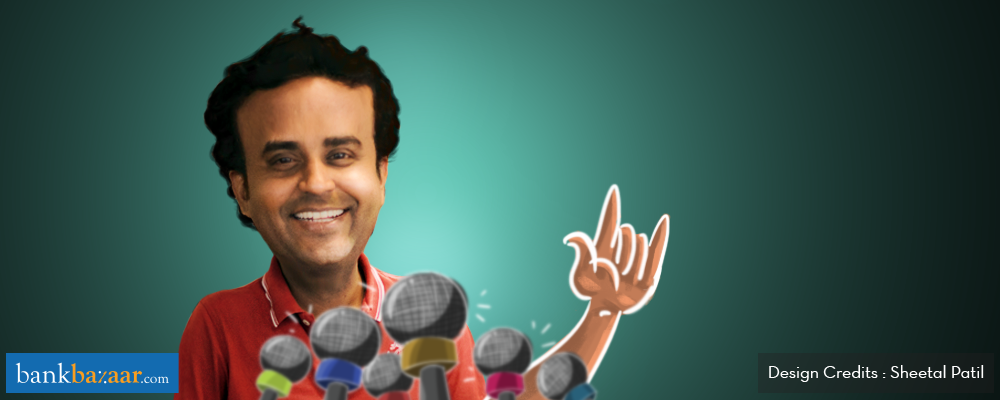
Cards, ATMs and payment systems dramatically changed the way banking is done across the world and more so in our country.
Not long ago, one had to visit a bank branch to deposit or withdraw cash. It was a pretty normal thing at the workplace to take a few hours off in a month for ‘bank work’. A large part of payments were handled in cash and receipts mostly handwritten as a proof of transaction.
Cheques were used for large transactions, wherever people needed a legal trail or purchases on bank holidays. For a cheque encashment, it used to take 2-6 working days based on whether it was a local cheque or non-local cheque. In cases where there was a need for 100% guarantee of money and faster encashment, one had to pay through a ‘demand draft’ (DD). Almost all government institutions insisted on paying through a DD. It was quite a task to stand in a queue to get those DDs!
Crores of our fellow citizens saved several hundred crores in productive work hours a year with the convenience of online money transfers and ATM-based cash withdrawal. Wider acceptance of card payments across the retail sector further brought down the need for keeping hard cash handy.
ATMs and Cards had far wider coverage than payment systems. Payment systems evolved in phases, starting initially with inter/intra bank transfers widely used by corporates, followed by tech-savvy customers. With IMPS (Immediate Payment Service), transferring money became near real-time for the common retail consumer. However, there were a variety of challenges that were left unsolved.
Payment services from an end-user perspective
- One has to expose their bank account or card details and there is always some element of fear about the security of these account details.
- For connecting transfer accounts, one has to own the veracity of IFSC codes. Most customers possess multiple bank accounts and follow different login systems. There is no interoperability across banks. Each transaction requires a two-step authentication process.
- After doing everything right, there are incidences of transaction failures and one doesn’t know why it works the next time by repeating the old ‘failed process’ exactly!
- Small payments continue to be in cash and one has to carry cash all the time. Start-ups in payment app solutions/wallets are trying to solve these problems and have had limited success so far. Seamless fund transfer from the bank and liquidity remains a challenge. Most of these players ended up becoming one more bank account equivalent in a mobile app form.
From the country perspective
- In spite of so much of advancement and wider usage of technology, the number of non-cash transactions per person per year on an average stands at 6!
- Only 6% of the 1 crore+ retailers have card payment infrastructure.
- Just less than 15% of the 6 lakh villages in India have access to banking services. About 14.5 crore households don’t have formal access to banking.
- In the absence of a formal banking system, gold becomes the default saving instrument for a large part of our country. When these ‘unbanked’ people need money, gold is the safest bet to access capital and avoid paying 48-72% interest rates that would otherwise send them into something akin to modern-day slavery.
- A sizeable part of the gold import problem and our currency depreciation has to do with the lack of formal saving systems for more than half of our citizens.
- By design, we force ourselves into a cash economy and thus keep the system fertile to avoid tax and hoard black money. It gets harder for the government to spot the leakage points as there is no money trail.
It’s commercially unviable for banks to open branches and serve the widely dispersed population with low-ticket-size transactions. This situation could have been even worse without a public-sector push where the government absorbs losses.
The banking industry needs a telecom equivalent revolution where everyone gets access to basic formal savings and credit.
UPI (United Payment Interface) is one of the early, big steps to revolutionise financial services. It fundamentally changes the way payment services are done.
Your personal mobile becomes the primary device for all payments.
It addresses all the four challenges mentioned above for an end user by simplifying 29 banks under one account and one identity. Less intermediaries mean less payment failures, ease of payments in a few clicks and one OTP, and protection of original bank account details/card details. One can pre-schedule payments and pre-authorise debits similar to ECS for utilities, school fees and subscriptions.
With the expected growth in smartphones from 15 crore to 50 crore, availability of an online verifiable identity and cost-effective biometric sensor solutions, the banking system is ripe for a big revolution.
When we look back at ourselves after a decade, UPI could have fundamentally changed the way financial services are consumed in our country, the way ATMs and online payment solutions changed our lives over the past decade. We live in exciting times!
Additional Reading: Unified Payment Interface: Mobile Payments Now As Easy As An SMS
Source credit: NPCI (National Payment Corporation of India draft note)